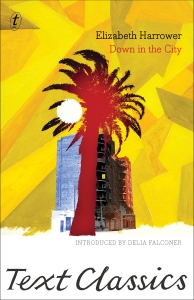Moral Hazard by Kate Jennings 20 June 2016
Last night I finished “Moral Hazard” by Kate Jennings. Cath – a self-described “bedrock feminist, unreconstructed left-winger” – is forced to take a job as a speechwriter at a Wall Street investment firm when her husband is diagnosed with Alzheimer’s disease. Jennings’ prose is incisive, witty, and economical, and her depiction of a woman (a fictionalised version of herself) watching her partner’s mind and identity crumble is all the more haunting for being wholly unsentimental.
The Multiple Effects of Rainshadow by Thea Astley 13 July 2016
Last night I finally finished ‘The Multiple Effects of Rainshadow’ by Thea Astley. I found it a bit difficult to get into at first. The writing is richly textured, so much so that it took a while before I found a rhythm with it. This is a book that stings. It’s about collective guilt, imprisonment of many kinds, and the brutal and dehumanising treatment of indigenous people under the guise of benevolence.
The Natural Way of Things by Charlotte Wood 15 July 2016
Amazing. An absolute gut-punch of a novel, an allegory of contemporary misogyny that is fierce and heartbreaking and brilliant. A book that urges you to thrust it into people’s hands and cry “Read this!”
The Delinquents by Criena Rohan 16 July 2016
The story of Brownie and Lola’s commitment to each other is beautifully told, but the other joy of this novel is Rohan’s ability to dissect adult hypocrisy and self-delusion with sardonic precision. There are also some darkly comic observations on the suffocating bigotry of 1950s Queensland!
Resurrection Bay by Emma Viskic 20 July 2016
I have mixed feelings about this novel. It’s well-plotted, features some vividly written scenes of violent action, and the emotional stakes resonate. But there are some details of characterisation and incident that feel contrived, and these had the effect of pulling me out of the narrative.
The Sugar Mother by Elizabeth Jolley 24 July 2016
A deeply compassionate portrait of a man longing for family, for emotional fulfilment, and for acceptance. Desires that leave him open to being exploited in a most unusual way… There is a certain formality to Jolley’s use of language, but it richly captures the inner life of her protagonist and his many vulnerabilities.
Forecast: Turbulence by Janette Turner Hospital 28 July 2016
Each of the short stories in this collection is a haunting jewel. The chaotic nature of weather, with its potential for purification as well as destruction, weaves through these stories as a metaphor for unintended consequences, for unendurable loss, for healing revelation.
Next time, two novels by Elizabeth Harrower: Down in the City and The Watch Tower. See you then!
 I picked this up by happenstance, it was sitting on a display shelf at Chatswood Library and caught my eye. I’m not going to give a response to each text in this volume, as the number is too large (and I am too lazy). Nor am I going to single out any particular works, as I don’t think that would do justice to this project and its contributors.
I picked this up by happenstance, it was sitting on a display shelf at Chatswood Library and caught my eye. I’m not going to give a response to each text in this volume, as the number is too large (and I am too lazy). Nor am I going to single out any particular works, as I don’t think that would do justice to this project and its contributors.

 Elizabeth Harrower’s debut novel Down in the City, published in 1957, essays similar themes to her last and better known work The Watch Tower, released nine years later.
Elizabeth Harrower’s debut novel Down in the City, published in 1957, essays similar themes to her last and better known work The Watch Tower, released nine years later.